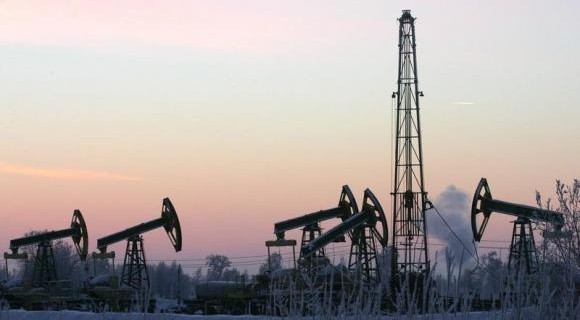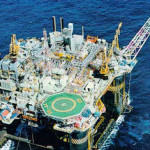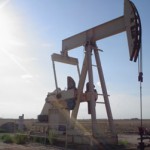Crude Oil’s Fall Pressures Energy Megaprojects

Energy development projects that looked great earlier this year are looking less so now.
Tumbling oil prices hit a fresh five-year low on Monday, pressuring some of the world’s biggest energy companies to reconsider multibillion-dollar expenditures. The biggest worries: megaprojects requiring billions of dollars in investment and sophisticated engineering to tap resources capable of decadeslong oil or natural gas production.
ConocoPhillips said its capital spending would fall to $13.5 billion next year, down 20% from this year’s level. Included in next year’s total is $4.8 billion, or 36% of its capital budget, to start up marquee oil and gas projects in the North Sea, in Australia and Canada’s oil sands.
Ryan Lance, ConocoPhillips’s chief executive, said the spending reduction “is prudent given the current environment.” The Houston-based company will spend less on some large projects that are nearing completion, and cut back on exploring for new sources of oil and gas. It estimates it will pump 3% more oil and gas in 2015 than this year.
For a generation, companies including ConocoPhillips, Exxon Mobil Corp. , Royal Dutch Shell PLC and Chevron Corp. focused investment and manpower on projects that took them to places including the deep waters of the U.S. Gulf of Mexico, Canada’s Alberta oil sands and the Caspian Sea.
Such huge projects typically play to the advantages of big companies. They have the engineering expertise to develop fields beyond the grasp of smaller firms and government-owned oil companies. What’s more, they need to keep adding reserves to offset production declines in mature areas. Big, long-lived fields in an era of $100-a-barrel Brent, the price that benchmark oil has fetched for much of the past few years, were a good formula for earnings gains.
Monday’s price of $66.19 a barrel for deliveries next month isn’t part of that equation. For Shell to consider pursuing a new project, it “must be able to break even at $70” a barrel, a spokesman said. A BP PLC spokesman said it uses “a long-term planning price of around $80” a barrel when considering new investments. Exxon Mobil Chief Executive Rex Tillerson recently said in a television interview that the company tests projects “across a range that’s all the way down to $40” when considering projects. A Chevron spokesman said the company has based its “2017 production forecast on a Brent price of $110” and that it conducts a “stress test” of projects at lower price levels.
Shares of Conoco, the third-largest U.S. oil producer by revenue, fell 4.2% to $65.03 at 4 p.m. in New York trading. Exxon was off 2.3% at $91.70, Shell was off 2.3% at $65.60, and Chevron fell 3.7% to $106.80.
Oil’s price drop is made more painful because of the locked-in costs of many of these projects. In the past few years, contractors such as drill-rig owners upped their rates as big companies competed for services. Some companies, including Shell, borrowed money in some recent quarters to cover combined payments for development, acquisitions and shareholder dividends, since the companies’ cash flow didn’t cover all of the spending. A Shell spokeswoman pointed out that the company’s cash flow in its most recent quarter was up from a year earlier.
Shell CEO Ben van Beurden said early this year that its big expensive projects made it too “convoluted” for the company to give public forecasts of production or cash flow.
He and other executives said their companies needed to curb spending. Even before oil prices began falling earlier this year, companies have been delaying or canceling projects for cost worries. Chevron and BP are reviewing plans for offshore projects in the U.K. and U.S. that could cost billions of dollars.
Shell decided not to pursue a U.S. plant to turn natural gas to liquid fuel, and in July said it wouldn’t continue with a gas project in Saudi Arabia.
A U.S. shale boom fueled by small companies drilling huge numbers of small wells is responsible for much of the price pressure on big companies. But that doesn’t mean an end to mega projects. Big companies still need them to maintain production levels.
John England, a vice chairman at consultants Deloitte LLP who advises oil companies on development strategy, said that he expects the biggest companies to follow through with many of their projects. “They’ll certainly cut back at the margins,” he said. But, he added, “energy demand continues to go up and at the same time we do have decline curves on existing production.”
Spokesmen for Shell and BP said the companies take long-term views when deciding whether to invest in a project and take into account oil-price volatility. Chevron’s finance chief has said the No. 2 U.S. oil producer believes “global demand for oil and natural gas will grow while existing sources of supply will inevitably decline.”
Still, analysts such as Bernstein Research’s Iain Pyle said oil companies will have to re-examine some of their big investments. If oil prices don’t rebound soon, “what we’re going to see is projects getting canceled,” he said.
Bernstein on Monday estimated that a 35% drop in oil prices would result in a 25% decrease in industry cash flow. But it forecast that crude prices would eventually rise as companies cut back on drilling.
A barrel of Brent traded for more than $115 on June 19.
Source: WSJ – Crude Oil’s Fall Pressures Energy Megaprojects





























